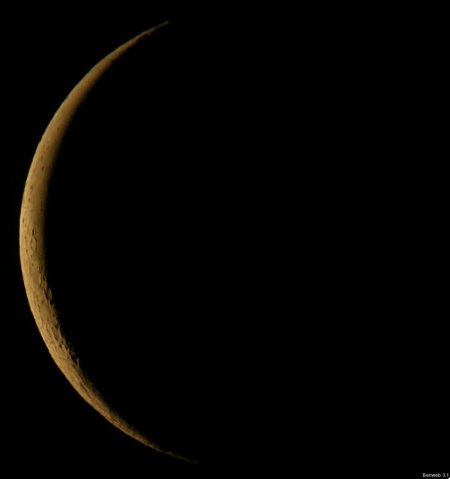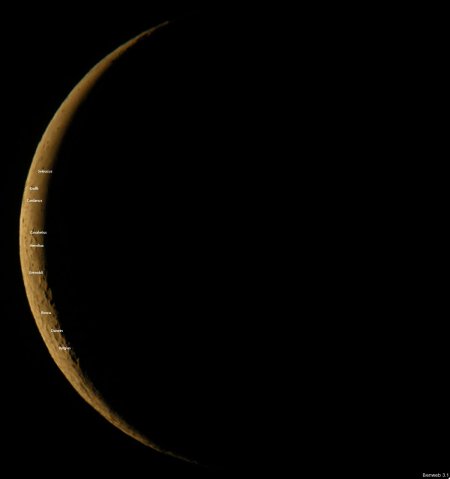Today is probably the last day I’ll get any kind of image out of this moon cycle. The moon rose at 5:21 a.m., well ahead of the 6:59 a.m. sunrise, so there was plenty of angular separation between the two bodies. Plus, the moon was a full 6% illuminated, so it wasn’t too hard to get a reasonable (not good, just reasonable) image. Tomorrow, the moon is scheduled to rise at 5:58 a.m. EST, just one hour ahead of the sun, which means that the sun will be pretty close to the moon. And since the moon will be only 2% illuminated, the exposure will be interesting, to say the least. New moon isn’t until 9:52 p.m. on Saturday, though, so I will definitely try my luck tomorrow morning!
But let’s not get ahead of ourselves. Today, for the second time this lunar cycle, I broke out of the backyard to take the shot. The first time was back on January 16, when I noticed the moon from the front yard, and didn’t even try to head to the back. And today, I just couldn’t get a clear line of sight through all the trees and telephone and power lines in the backyard, so I wound up on the swale at 6:25 this morning taking photos of the moon. And it was chilly, too, although nothing like the cold those poor folks in the mid-Atlantic states are facing…
And this is what I saw:
The lunar features are getting harder and harder to identify; big old Grimaldi is the safest bet, followed by Hevelius and Cavalerius to his north. From there, you can keep going north and find Cardanus, Krafft, and Seleucus, but after that it gets dicey. And going south from Grimaldi isn’t much easier: Rocca, then Darwin, then Byrgius are about all I can make out. (No Donner, no Blitzen.)
Tomorrow we’ll see if my lunar cycle can come full circle: from 0.02 illuminated on January 16 to 0.02 illuminated on February 12. Twenty-eight days of visible moon out of a 29.5-day cycle; that would be pretty nifty! But I won’t be too surprised if I can’t get the shot.



